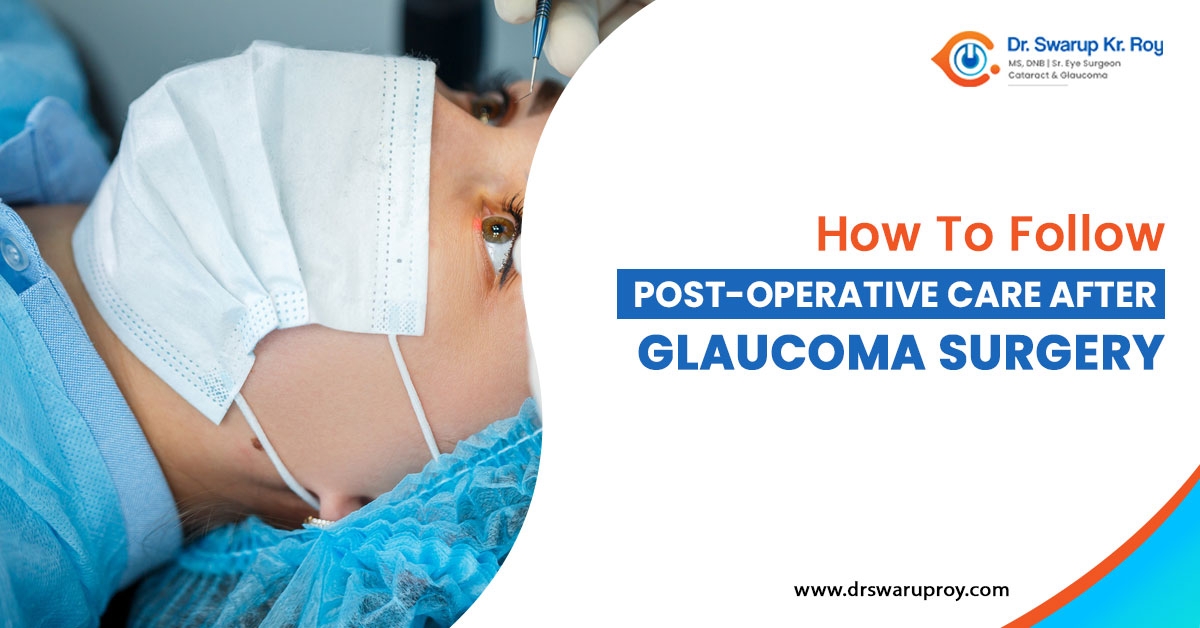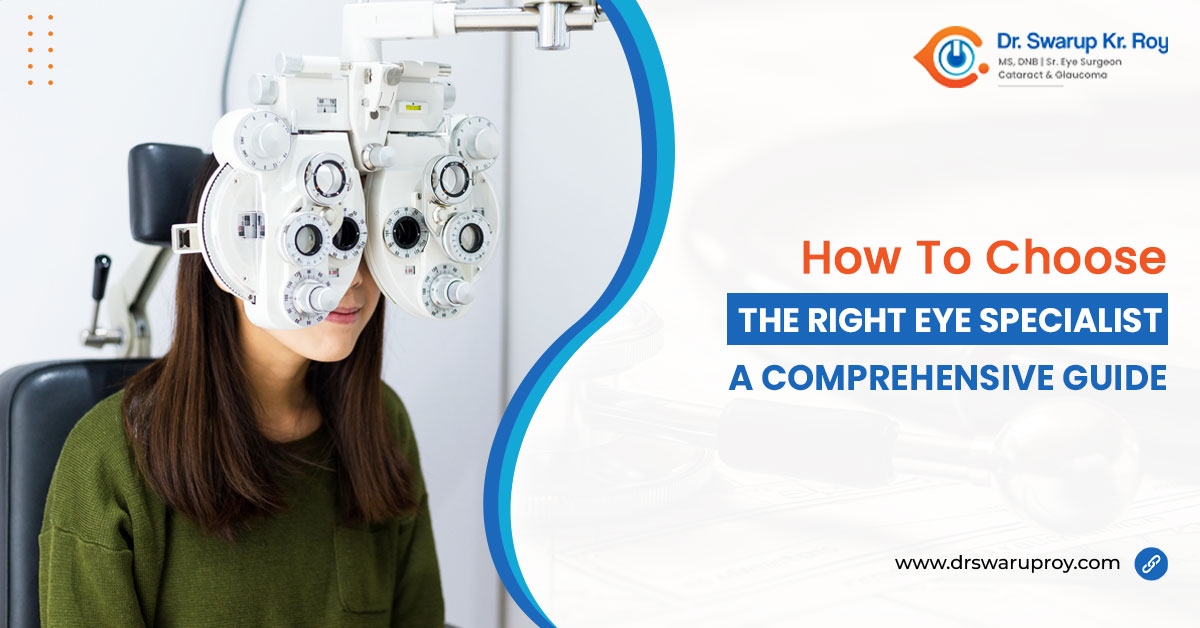Glaucoma is a group of serious eye disorders which is caused by severe damage to the optic nerves. In most cases, this eye disorder doesn’t showcase any symptoms and as a result, the patient doesn’t get an early diagnosis and treatment. You must know that glaucoma is one of the most common causes of vision loss and this is why it is essential to book an appointment with an experienced glaucoma specialist in Siliguri if you suspect any abnormalities in the eyes.
Glaucoma mainly develops due to excessive fluid build-up in the front part of the eyes. This fluid often puts pressure on the eyes while damaging the optic nerve. Regular monitoring of eye pressure or intraocular pressure can help you prevent glaucoma. Herein, if you have any damage in the optic nerve then you must continuously check for glaucoma as the optic nerve is highly essential for good vision. Without proper functioning of the optic nerve, your brain will not receive any visual information from the eyes.
Types
1. Close-Angled Glaucoma- Closed-angled or narrow-angle glaucoma is one of the rarest but acute types of glaucoma. You can develop this condition if the angle between your cornea and iris becomes narrow. This can happen when significant changes in the pupil are noticed while making it dilated too quickly. Herein, this issue can block the drainage canals and increase your eye pressure which can further lead to glaucoma.
2. Open-Angled Glaucoma- One of the most common types of glaucoma is open-angle glaucoma. This eye condition develops when certain resistance starts building up in the drainage canals of the eyes. Initially, the drainage canals will function normally but as the condition progresses, it can damage the optic nerve while leading to excessive fluid build-up. In most cases, this disorder goes unnoticed for several months or years due to the absence of any prominent symptoms.
3. Congenital Glaucoma- In some cases, glaucoma can also be congenital. Some babies can be born with improperly developed drainage canals which might be the main cause of congenital glaucoma. The symptoms of glaucoma among babies can either be understood at birth but mostly it gets unidentified until childhood. Some of the other known names for this type of glaucoma are paediatric or infantile glaucoma.
4. Normal-Tension Glaucoma- While visiting the best glaucoma doctor in Siliguri, the doctor may characterize your condition as normal-tension glaucoma if your eye pressure is normal but you have significant damage in your optic nerve. This low-tension glaucoma is another common type of glaucoma that can showcase minimal symptoms.
5. Pigmentary Glaucoma- Pigmentary glaucoma is another type of glaucoma which is caused when pigment loss from the posterior part of the iris happens. This often leads to excessive pigment release in the anterior part of the eye while leading to glaucoma. People suffering from this eye condition may have elevated as well as normal range of intraocular pressure.
Symptoms
In most cases of glaucoma, there are no early signs or symptoms. Most people get to know that they have glaucoma when they start experiencing vision loss. Glaucoma damage cannot be reversed and this is why it is always recommended to schedule routine eye examinations to check for this disease. Early detection and diagnosis is the only way you can prevent blindness. You must know that people suffering from closed-angle glaucoma experience more severe symptoms which come suddenly.
Some of the common symptoms that you can experience in all types of glaucoma are-
- Headache
- Eye pain
- Increased eye pressure
- Nausea
- Low or narrowed vision
- Red eyes
If the glaucoma is congenital then the infant can showcase various symptoms. Some such signs include tears without crying, cloudy eyes, and increased blinking. People who experience none of these symptoms often visit a glaucoma doctor when they develop loss of side vision or difficulty seeing anything central vision.
Causes
There is a fluid present in your eye known as aqueous humor and this is the main thing that can lead to glaucoma. In normal cases, the eye fluid flows out from the eyes through a channel but if any blockage is noticed in this channel then this fluid can build up in the eyes. There is no exact cause of this blockage but in most cases, it can be passed down from a parent to their child.
Some of the other causes of glaucoma include eye infections, chemical injury in the eye, inflammatory diseases, and blockage in any of the blood vessels inside the eyes. In some rare cases, eye surgery to correct other conditions such as farsightedness or near-sightedness can also lead to glaucoma.
You must know that glaucoma mainly develops when significant damage is caused in the optic nerve. This is because the optic nerve consists of several tiny nerve fibres and when these nerve fibres start dying, it can cause permanent blind spots in the eyes. It is possible for you to not notice any blind spots if some of your nerve fibres have died. However, if this condition keeps on progressing then all your nerve fibres will die which will lead to permanent blindness.
Risk Factors
- Farsightedness: People suffering from farsightedness have a higher risk of developing acute closer-angled glaucoma. This is why it is more important for people suffering from farsightedness to indulge in regular eye check-ups to decrease the likelihood of this life-threatening disorder.
- Family History: While visiting a reputed glaucoma specialist in Siliguri, you can witness the doctor asking you about any family history of glaucoma. This is because glaucoma is linked with family history and genetics. If you have any blood relative with this disorder then you’re more likely to develop it.
- Near-sightedness: High myopia or near-sightedness has been related to a higher risk of various pathological ocular disorders. Some such disorders include retinal detachment, premature cataracts, and macular degeneration. Due to the development of these eye issues, you’re more prone to develop elevated eye pressure and eventually, glaucoma.
- Excessive Usage Of Corticosteroids: Corticosteroids are often used to treat a variety of inflammatory diseases. However, if you use this drug excessively then it can increase the risk of steroid-related glaucoma. Secondary open-angle glaucoma is the most common type of glaucoma that you can develop due to the drug.
- Advanced Age: Glaucoma can affect people of any age but it is more common among older adults. If you’re above 40 years then you have a higher chance of developing glaucoma due to the increased loss of the retinal nerve fibre layer. This issue makes glaucoma progression speedier while enhancing the likelihood of permanent blindness.
- Underlying Medical Conditions: There are certain underlying health issues that can increase the risks of glaucoma. Some such conditions include migraine, sickle cell anaemia, diabetes, and high blood pressure. The oxidative stress and vascular effects associated with these conditions make it more likely to develop primary open-angle glaucoma.
Diagnosis
To get early treatment and stop the progression of glaucoma, it is pivotal to schedule regular eye check-ups. The eye exams conducted by the glaucoma specialist in Siliguri will assess both vision loss and optic health. Some of the other effective tests that can evaluate the presence of glaucoma are:
- Slit-lamp test- This test is done by the doctor using a special microscope which helps in examining the inside areas of your eye. Some of the areas that will be seen properly during this test are the pupil, iris, lens, optic nerve, and retina.
- Dilated eye exam- Eye dilation is another effective test which is done by widening your pupils and helps in viewing the optic nerve. This is a pain-free test but after the procedure, you may experience blurry eyes or light sensitivity.
- Visual field test- A visual field test or perimetry is done to evaluate any significant changes in your peripheral vision caused due to glaucoma. This checks whether you can properly see things on your side or not.
- Optical coherence tomography- Damage in the optic nerve is the main indication of glaucoma and this can be seen with the help of optical coherence tomography.
- Pachymetry- People who have higher corneal thickness have higher chances of developing increased intraocular pressure. This is why during routine examination corneal thickness is also checked through pachymetry.
- Ocular Pressure Test- Elevated eye pressure is one of the main indications of glaucoma. The doctor will perform an ocular pressure test or tonometry to check your eye pressure.
Treatment
There is no permanent cure for glaucoma but there are certain effective treatment options that can slow down the progression of the disease and reduce the risk of blindness.
Surgery: One of the most effective ways to treat glaucoma is surgery. This invasive treatment option can help you control eye pressure while restoring the lost vision. The doctor can either recommend minimally invasive glaucoma surgery or traditional surgeries to manage the condition.
Medications: Apart from invasive surgical interventions, various medications can control glaucoma. Herein, the doctor can prescribe you eye drops to improve the drainage system of the eyes and decrease fluid build-up. You must know that glaucoma is a life-long condition so the doctor may recommend you to use the eye drops for a longer time.
Laser therapy: If excessive fluid build-up is found to be the main cause of glaucoma then the doctor can use laser to drain the fluid from your eyes. The effectiveness of the laser therapy vary person to person and in some cases, the doctor may advise you to still use eye drops after the therapy.
Lifestyle Remedies
To promote eye health and decrease the complications associated with glaucoma, you can also follow certain lifestyle remedies. Firstly, it is important for you to indulge in a healthy diet packed with vitamins, antioxidants, copper, and zinc. This will help you in decreasing the distressing symptoms of glaucoma.
Additionally, to reduce eye pressure, you can also start an effective exercise regimen and drink less amounts of caffeine. You must also not forget to use the eye drops and other medications as directed by the doctor. This is because ignoring the severity of the condition and not following the correct measures can worsen the optic nerve damage while leading you towards irreversible vision loss.
Prevention
- Indulge in regular eye check-ups and glaucoma testing.
- Always wear eye protection to avoid any serious eye injuries.
- Know your family history of glaucoma so that you can increase the frequency of screening.
- Take the prescribed eye drops regularly to decrease the chances of severe eye problems and elevated eye pressure.
- Avoid smoking and tobacco consumption.
- Maintain a healthy body weight to manage eye pressure.
Glaucoma is a silent killer that can take your vision suddenly. You must contact the best glaucoma specialist in Siliguri immediately if you’re above 40 years old to determine your risks of developing this disorder. If you’re at higher risk then increase the frequency of eye examinations and follow the preventive measures advised by the doctor to stop the progression of the disorder.
Comments (0)





